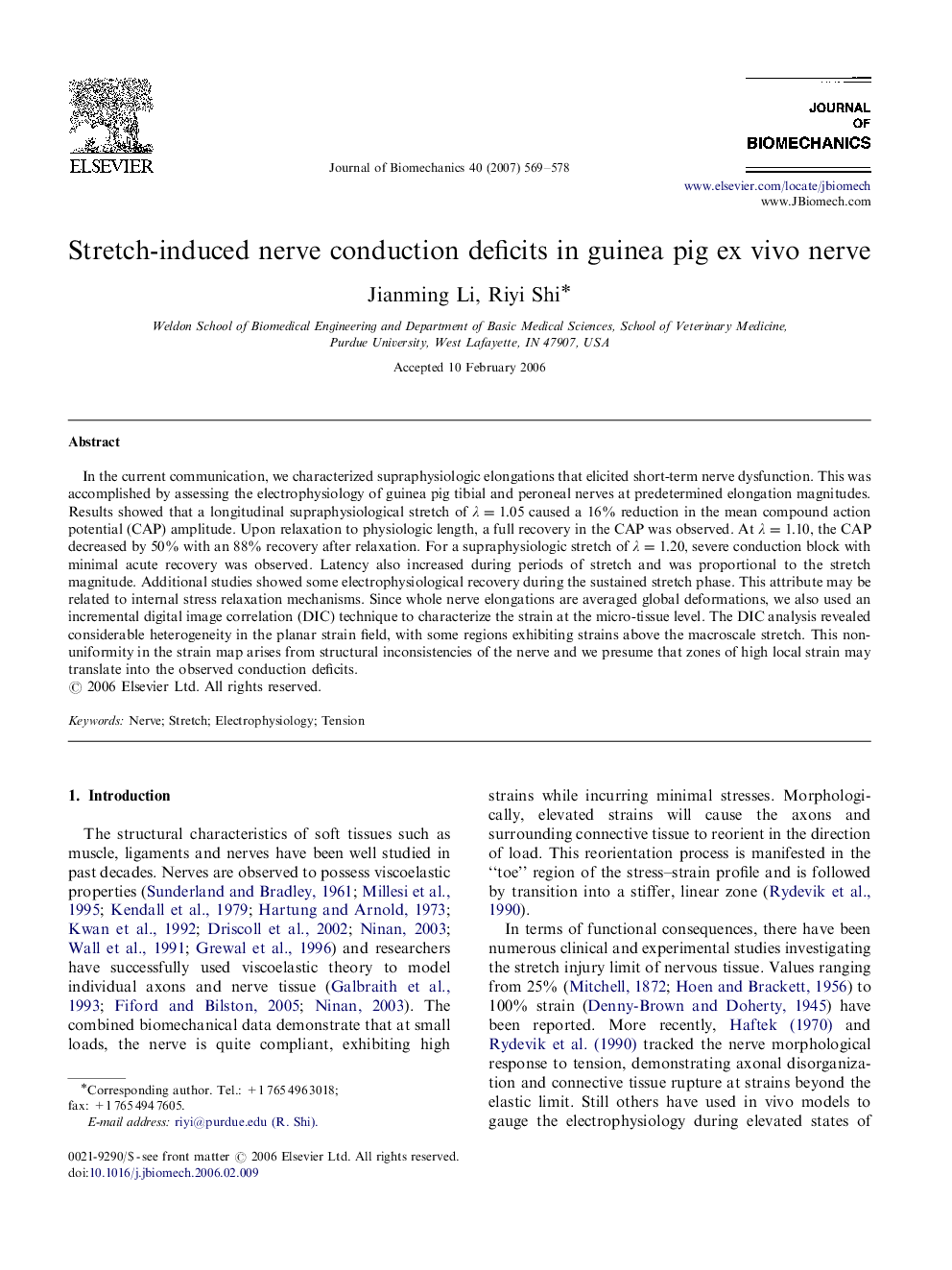| Article ID | Journal | Published Year | Pages | File Type |
|---|---|---|---|---|
| 874660 | Journal of Biomechanics | 2007 | 10 Pages |
In the current communication, we characterized supraphysiologic elongations that elicited short-term nerve dysfunction. This was accomplished by assessing the electrophysiology of guinea pig tibial and peroneal nerves at predetermined elongation magnitudes. Results showed that a longitudinal supraphysiological stretch of λ=1.05λ=1.05 caused a 16% reduction in the mean compound action potential (CAP) amplitude. Upon relaxation to physiologic length, a full recovery in the CAP was observed. At λ=1.10λ=1.10, the CAP decreased by 50% with an 88% recovery after relaxation. For a supraphysiologic stretch of λ=1.20λ=1.20, severe conduction block with minimal acute recovery was observed. Latency also increased during periods of stretch and was proportional to the stretch magnitude. Additional studies showed some electrophysiological recovery during the sustained stretch phase. This attribute may be related to internal stress relaxation mechanisms. Since whole nerve elongations are averaged global deformations, we also used an incremental digital image correlation (DIC) technique to characterize the strain at the micro-tissue level. The DIC analysis revealed considerable heterogeneity in the planar strain field, with some regions exhibiting strains above the macroscale stretch. This non-uniformity in the strain map arises from structural inconsistencies of the nerve and we presume that zones of high local strain may translate into the observed conduction deficits.
